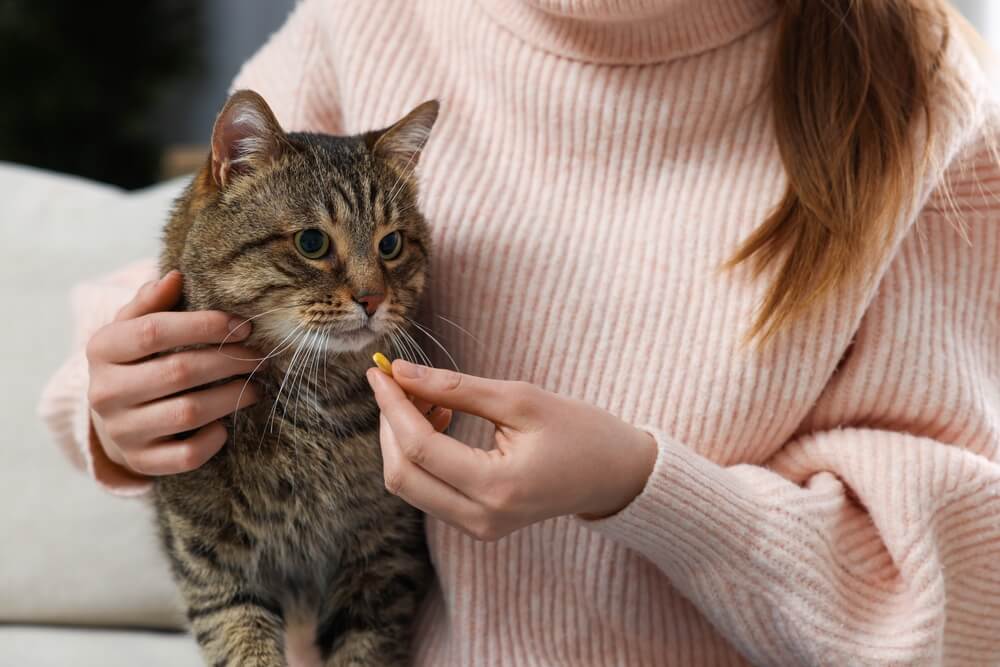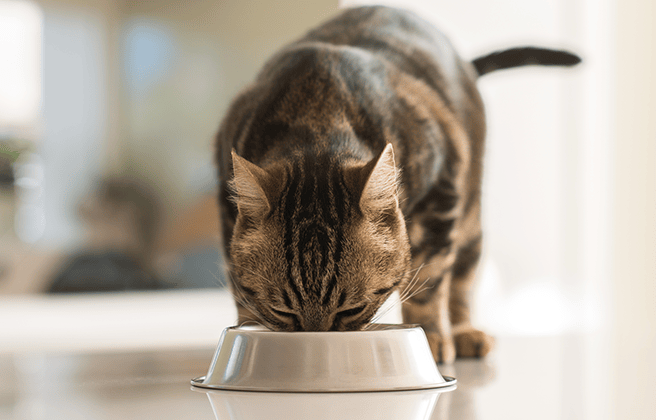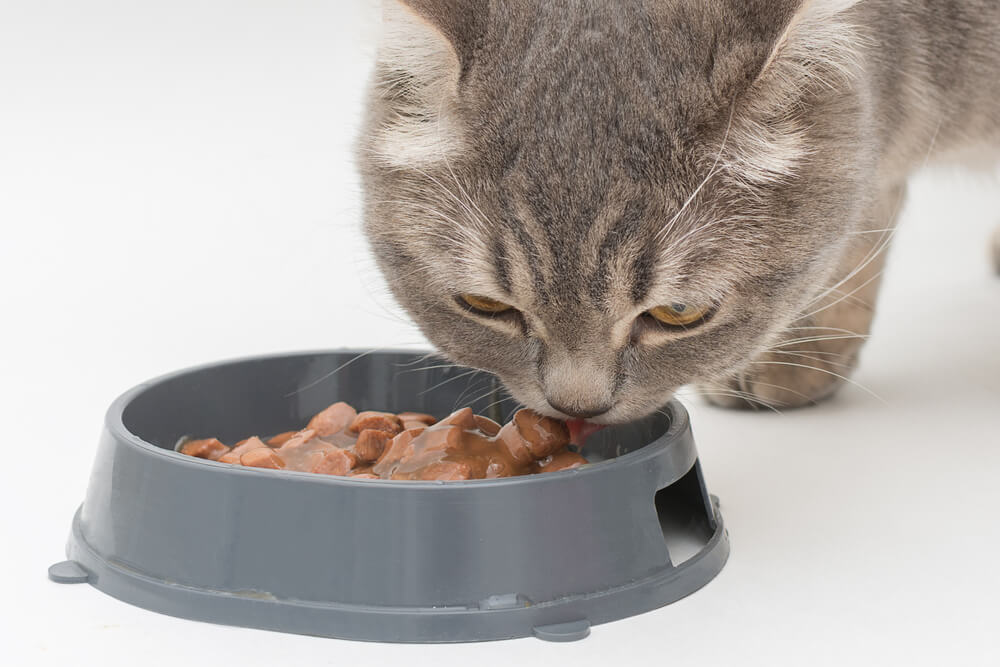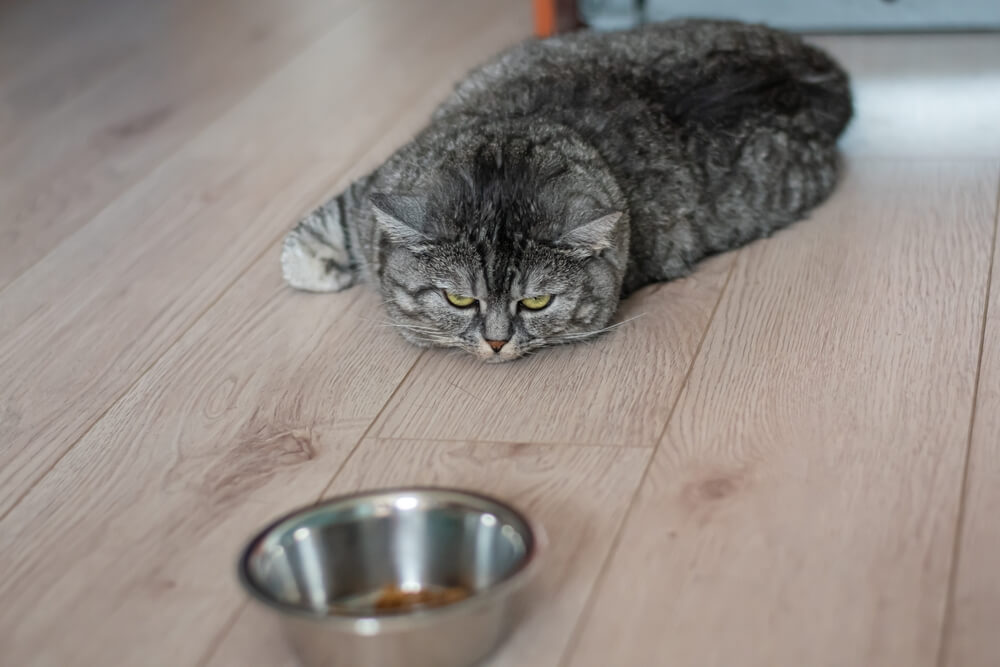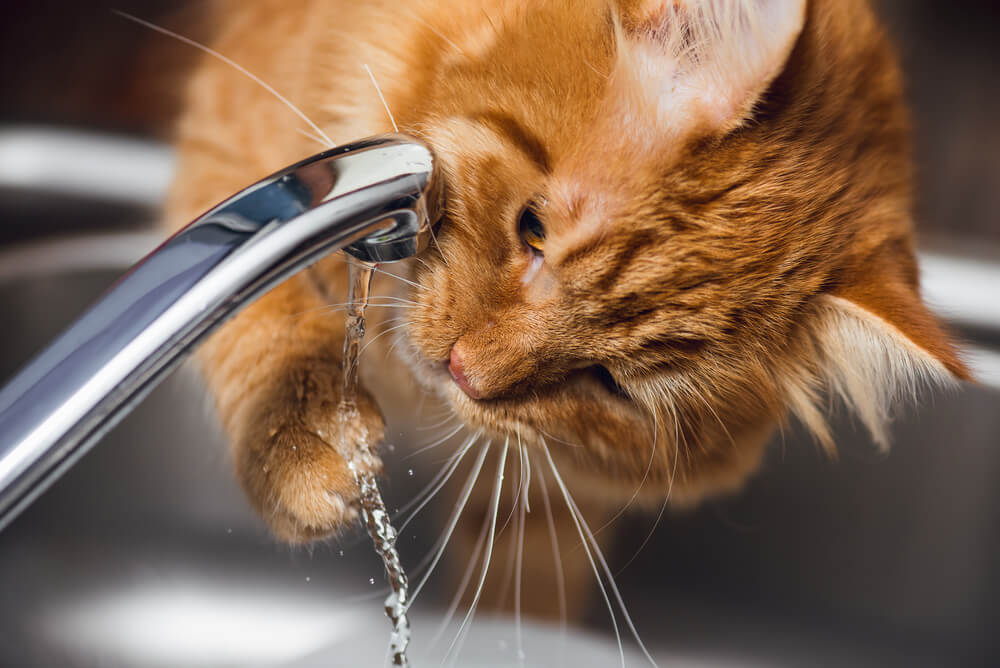
As pet parents, we focus so much on what our cats are eating that it can be easy to forget about what they drink — the most important nutrient of all — water.
Water not only keeps your cat hydrated, it also assists with digestion, circulation, nutrient absorption, and organ function, making it crucial for your cat’s wellbeing. How much your cat needs to drink for optimal health depends on several factors and can vary from one cat to another.
A general rule is that a cat should drink roughly half a cup of water for every 5 pounds of body weight per day.
But this amount will also be affected by a cat’s diet, any underlying health conditions, and its weight. For example, wet food will provide more hydration than dry kibble.
Note: If your cat is drinking more than usual or appears to be thirsty frequently, seek advice from a veterinarian, as this could be a sign of diabetes or feline hyperthyroidism.
Why is my cat dehydrated?
It is not just lack of water which can cause dehydration in cats. They can become dehydrated for a number of reasons, including:
- They instinctively prefer to drink running or moving water so may dislike water sitting in a bowl
- Cats can survive on less water than dogs and have a lower thirst drive
- The way cats drink water is quite ineffective, only drinking about 3/100 of a teaspoon per lap of the tongue
- Underlying health conditions such as diarrhea, diabetes, or chronic kidney disease
Not drinking enough water can cause dehydration in cats, which can be fatal if not treated early.
How can I tell if my cat is dehydrated?
Symptoms of dehydration in cats can include:
- Loss of appetite
- Dry gums
- Sunken eyes
- Loss of energy
- Decrease in skin elasticity
- Increased heart rate
- Vomiting/diarrhea
- Constipation
- Trouble breathing
If your cat has one or all of these symptoms, seek advice from a veterinarian immediately. Dehydration can happen quickly and pet parents can easily miss the signs until the symptoms become severe.
Cats with existing health conditions such as diabetes, hyperthyroidism, kidney disease, or cancer should be monitored more closely as they are more likely to become dehydrated if they stop drinking water or reduce their water intake.
Other circumstances where pet parents need to be more vigilant with their cat’s water intake is in extreme heat or prolonged exposure to heat.
How can I encourage my cat to drink more?
If your cat doesn’t seem interested in drinking water, try some of the below methods:
- Change the location of the water bowl to somewhere quieter – remember to show them where the new location is
- Add some additional bowls throughout the house
- Keep water bowls clean and refill with fresh water several times during the day
- Change the bowls from plastic to metal or ceramic as this may change the taste of the water
- Change your cat’s diet to wet food or add a moist topper to their meals
- Try a water fountain
If you have tried these methods and your cat is still not interested in drinking water, seek advice from a veterinarian. Particularly if your cat has other symptoms such as weight loss, vomiting, mouth breathing, diarrhea, or a change in toilet habits.
We uphold the highest editorial standards when creating the authoritative content pet parents rely on and trust.
Every piece of clinical content on the Cat Food Advisor is reviewed by our certified Veterinary Advisory Board, which consists of licensed veterinarians and medically certified specialists.
Our reviews are completely independent; we are not paid by any pet food company to promote their products favorably. We do not accept money, gifts, samples or other incentives in exchange for special consideration. For more information see our Disclaimer & Disclosure page.




